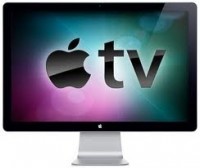Windows 7 will become the leading operating system worldwide in the personal computer installed base, running on 42% of computers in use by the end of 2011, according to the Gartner research group (http://www.gartner.com). However, the Mac also continues to make big strides.
Shipments of Macs have seen increases in the last 12 months. Mac OS X was shipped on 4% of new computers worldwide in 2010 versus 3.3% in 2008. Mac OS X is forecast to be on 4.5% of computers in 2011, and grow to 5.2% of new computers in 2015. Shipments will grow stronger in mature markets where consumers are buying into the Apple product ecosystem.
“The adoption of Mac PCs and Mac OS is a result of Apple’s ability to grow well above the market average in the last 12 to 24 months, thanks to its ease of use from the user interface (UI) point of view and ease of integration with other Apple devices, such as the iPhone, iPad, iPod touch and the existing Apple ecosystem of applications and programs,” says Annette Jump, research director at Gartner.
The Mac OS share still varies greatly by region, as Apple has much stronger presence in North America and Western Europe. The fastest growth is expected to happen in selected emerging countries, where Apple and the Mac are growing from a small base.
Gartner’s latest OS forecast shows 94% of new computers will be shipped with Windows 7 in 2011.
“Steady improvements in IT budgets in 2010 and 2011 are helping to accelerate the deployment of Windows 7 in enterprise markets in the U.S. and Asia/Pacific, where Windows 7 migrations started in large volume from 4Q10,” says Jump. “However, the economic uncertainties in Western Europe, political instability in selected Middle East and Africa (MEA) countries and the economic slowdown in Japan after the earthquake and tsunami in March 2011 will likely lead to slightly late and slow deployment for Windows 7 across those regions.”
Gartner’s forecast assumes that Windows 7 is likely to be the last version of Microsoft OS that gets deployed to everybody through big corporatewide migration. In the future, many organizations will also use alternative client computing architectures for standard computers with Windows OS, and move toward virtualization and cloud computing in the next five years.
Linux OS is expected to remain niche over the next five years with its share below 2% because of the remaining high costs of application migration from Windows to Linux. In the consumer market, Linux will be run on less than 1% of computers, as Linux’s success with mini-notebooks was short-lived and few mini-notebooks are preloaded with it today.
Gartner does not expect Chrome OS, Android or webOS to get any significant market share on computers in the next few years. Analysts believe that to get any consideration as an alternative for a traditional computer, lighter OSs will first need to get strong positions on emerging client devices such as Web books and media tablets.




